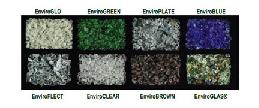
Imagine charging a cell phone while you are taking your morning walk or making your laptop run on energy expelled when you stretch your arms. Nanotechnology has made harvesting the minutest form of energy a possibility and a latest experiment conducted by undergraduates at NASA’s Johnson Space Center in Houston shows how microgravity can be utilized to manufacture more of the useful zinc oxide nanowires that can be later used to harvest energy.
The experiment was conducted by Hannah Clevenson, Olivia Lenz and Tanya Miracle under NASA’s Reduced Gravity Student Flight Opportunities Program. The program offers students the chance to fly in a special reduced gravity aircraft and propose, design, fabricate or conduct experiments in flight. The students’ team utilized this opportunity to investigate the properties of zinc oxide nanowires manufactured in the microgravity conditions.
What the team found was that the microwave synthesis of zinc oxide nanowires in reduced gravity resulted in longer and straighter nanowires as compared to those manufactured in normal lab conditions. The quantity of the wires manufactured was also larger. Thus if the inexpensive zinc oxide nanowires could be produced in microgravity conditions, they could be later used for a number of applications like using them in electronic devices, providing low-power backup energy source to astronauts or robots and making better efficiency batteries.
Zinc Oxide (ZnO) has piezoelectric properties, which means when stressed a voltage difference is created across the material. The material can therefore be used to harvest energy from normal daily tasks and provide energy sources for all kinds of applications.

Olivia Lenz one of the team members pointed out that in the normal routine of life there are many activities that dispel energy into the environment. This may be walking, jogging, working or simply stretching your arms. It is this energy that can be harvested instead of being wasted by the nanotechnology and later used as an energy resource.
The possibilities of tapping the properties of the ZnO wires are immense. They could be used by army men to charge their devices in the middle of nowhere, or could be integrated into spacesuits to sustain electronics carried by astronauts.
Chemical engineering student Tanya pointed at another important application. As Zinc oxide holds up to 10 times the charge of lithium, it could easily replace lithium batteries either as a smaller sized battery of the same energy or a battery with 10 times more longevity. The study definitely opens new avenues of utilizing untapped and otherwise wasted energy dispelled into the universe.
Via: NASA




